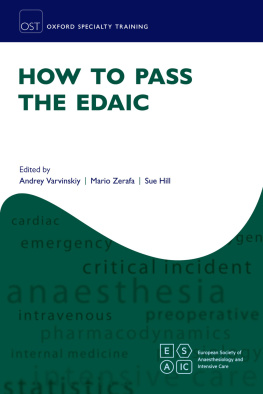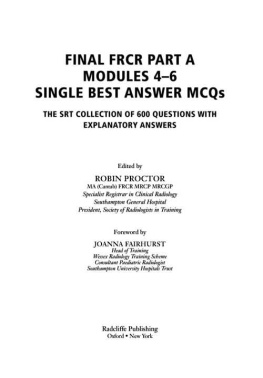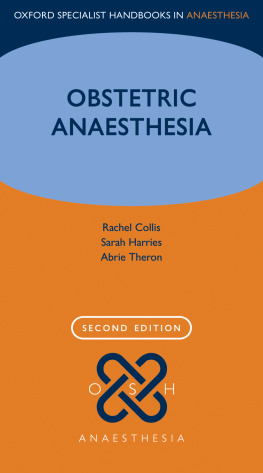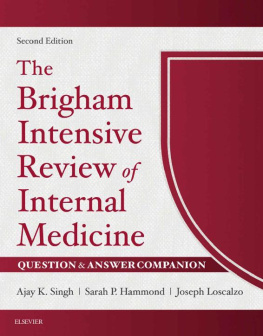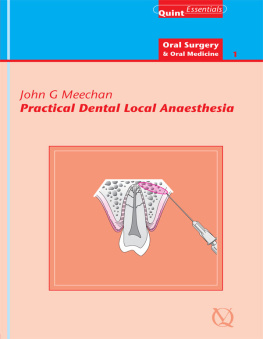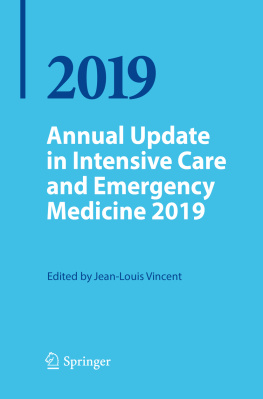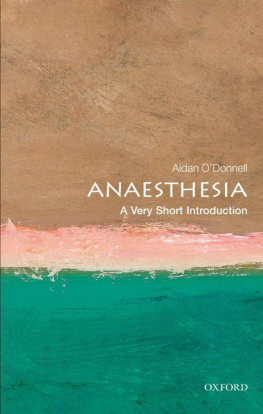How to pass the EDAIC

Great Clarendon Street, Oxford, OX2 6DP,
United Kingdom
Oxford University Press is a department of the University of Oxford. It furthers the Universitys objective of excellence in research, scholarship, and education by publishing worldwide. Oxford is a registered trade mark of Oxford University Press in the UK and in certain other countries
Oxford University Press 2023
The moral rights of the authors have been asserted
First Edition published in 2023
Impression: 1
All rights reserved. No part of this publication may be reproduced, stored in a retrieval system, or transmitted, in any form or by any means, without the prior permission in writing of Oxford University Press, or as expressly permitted by law, by licence or under terms agreed with the appropriate reprographics rights organization. Enquiries concerning reproduction outside the scope of the above should be sent to the Rights Department, Oxford University Press, at the address above
You must not circulate this work in any other form and you must impose this same condition on any acquirer
Published in the United States of America by Oxford University Press
198 Madison Avenue, New York, NY 10016, United States of America
British Library Cataloguing in Publication Data
Data available
Library of Congress Control Number: 2022940780
ISBN 9780198867029
eISBN 9780192899309
DOI: 10.1093/med/9780198867029.001.0001
Oxford University Press makes no representation, express or implied, that the drug dosages in this book are correct. Readers must therefore always check the product information and clinical procedures with the most up-to-date published product information and data sheets provided by the manufacturers and the most recent codes of conduct and safety regulations. The authors and the publishers do not accept responsibility or legal liability for any errors in the text or for the misuse or misapplication of material in this work. Except where otherwise stated, drug dosages and recommendations are for the non-pregnant adult who is not breast-feeding
Links to third party websites are provided by Oxford in good faith and for information only. Oxford disclaims any responsibility for the materials contained in any third party website referenced in this work.
To my wife and my best friend Irina, for all her encouragement and strength.
Andrey Varvinskiy
To my dear wife Josette, for her many sacrifices in the course of my career.
Mario Zerafa
To Hugh, who is always there for me.
Sue Hill
A special thank you to Mr Hugues Scipioni (ESAIC Education & Examinations Manager) for his tireless work in perfecting the smooth running of the EDAIC and his continuous support and friendship.
The European Diploma in Anaesthesiology and Intensive Care (EDAIC) is an internationally recognized examination run by the European Society of Anaesthesiology and Intensive Care (ESAIC). The curriculum and specific areas covered by each of the Parts and Papers is available on the ESAIC website alongside the dates and deadlines for application for each of the two Parts of the Examination: https://www.esaic.org/education/edaic.
One of the constant requests received from candidates over past years has been for a book that helps them prepare appropriately. Many of the candidates for the EDAIC work outside of Europe and are not necessarily aware of any differences between their local guidelines and treatment protocols compared with those published by ESAIC. We know that there are many Anaesthesia exam preparation books but all of them address national rather than international examinations and many use different question formats from those encountered in the EDAIC. This book is the first to address the contents of the EDAIC examination and provide examples of typical questions accompanied by answers and explanations. All the questions have been written specifically for this book but are very similar to those encountered in the examination. The contributors all have extensive experience as Examiners for the EDAIC and are best placed to provide an appropriate level of difficulty for each of the practice Papers.
When preparing for the EDAIC, it is important for candidates to use all possible resources: online tutorials, textbooks, local face-to-face or online oral practice sessions as well as exam preparation books. The educational material on the ESAIC website should be used extensively by candidates as it covers European practice. The editors hope that this book will address some of the difficulties experienced by previous EDAIC candidates and suggest ways in which to improve the likelihood of a successful attempt at both Part I and Part II of the EDAIC.
Dr Andrey Varvinskiy MD DA(UK) DEAA FRCA
Past Chairman of the ESAIC Examinations Committee
Dr Mario Zerafa MD DA(UK) DEAA FRCA FERC
Past Chairman of the EDAIC Part II Subcommittee
Dr Sue Hill MA PhD FRCA
Past Chairman of the ESAIC Examinations Committee
The history of the European Diploma in Anaesthesiology and Intensive Care (EDAIC) begins in 1984 by the European Academy of Anaesthesiology (EAA), where at the time, this exam was known as the European Diploma in Anaesthesiology (EDA).
Originally created for doctors registered in Europe only, the objective of the exam was to establish a multinational, multilingual European postgraduate diploma examination, which would serve as a means of identifying well-trained anaesthesiologists from any European country. The harmonization of standards and free movement of anaesthesiologists in Europe was of great importance and this exam became the necessary key to create consistency in theoretical and clinical knowledge.
On 1 January 2005, the European Diploma in Anaesthesiology (EDA) moved under the umbrella of ESA as a consequence of the amalgamation of the European Academy of Anaesthesiology, the European Society of Anaesthesiologists, and the Confederation of European National Societies of Anaesthesiology. Diplomates are now known as DESAIC (Diplomates of the European Society of Anaesthesiology and Intensive Care, previously DEAA).
No longer just for doctors registered in Europe, in 2010, the European Diploma opened to candidates from all over the world because of the adoption of the Glasgow Declaration by the ESA. By 2013 the name was officially changed to European Diploma in Anaesthesiology and Intensive Care (EDAIC).
Today, EDAIC is recognized, worldwide, as a high-quality benchmarking tool in anaesthesia and intensive care. As an activity of the ESA, the EDAIC has an educational, non-for-profit purpose. Any profit is either invested in improvements of EDAIC or injected in other educational activities of ESA, which as of 1 October 2020, has become ESAIC (the European Society of Anaesthesiology and Intensive Care), better reflecting our full community and the theoretical skills found within the exam.
EDAIC is organized in most European countries from Iceland and Portugal in the West to Russia and Armenia in the East, but also in other countries in South America, Northern Africa, the Middle East, and Asia. Additionally, it has been officially adopted or recognized in 17 countries in Europe and beyond.

